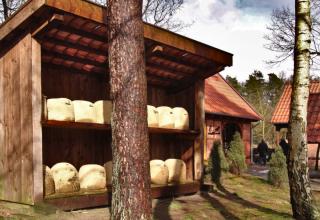

Why not set up a couple hives? Some hive designs recreate the natural nooks bees make their homes in. They will provide you with a little organic honey and will increase pollination for your fruits and vegetables.
Before getting started, check with your local town hall for local zoning issues.
Usually, hives must be placed with a setback of several dozens of feet from public walkways, and several hundred feet from public buildings like schools, hospitals, etc. A buffer must also surround the hive up to the limits of your property and neighboring houses. These requirements are often specific to each locality. When they’re met, hives can even be set up in an urban setting. Of course, best is to have a sliver of forest, prairie or a large orchard treated only with organic products. For any given flower-rich area, there shouldn’t be more than 30 hives to a square mile (about 2 km²).
Too many hives makes it harder for other pollinator insects to forage.
Most hives sold on the market are square. In nature, wild bees and pollinators tend to cluster in cylindrical shapes; consequently, best is to provide them with a roundish shape. Get your hands on a mold to make smaller cylindrical hives with hewn straw and plaster or clay.
In every tiny hive, the bees will build 7 or 8 combs on wooden rods lodged in notches. As the honey is produced and stored by the bee colony, you can stack them (3 to 8 per hive maximum). Make sure to open the lower hive at the tip.
It is also possible to replace the plaster with lime or clay (must be protected from rain), and straw can be replaced by cattail stems, nettles, sunflower stems or even conifer wood sawdust (untreated).

Pierrick Le Louarn
Shelter the hives from rain to make the last several seasons.